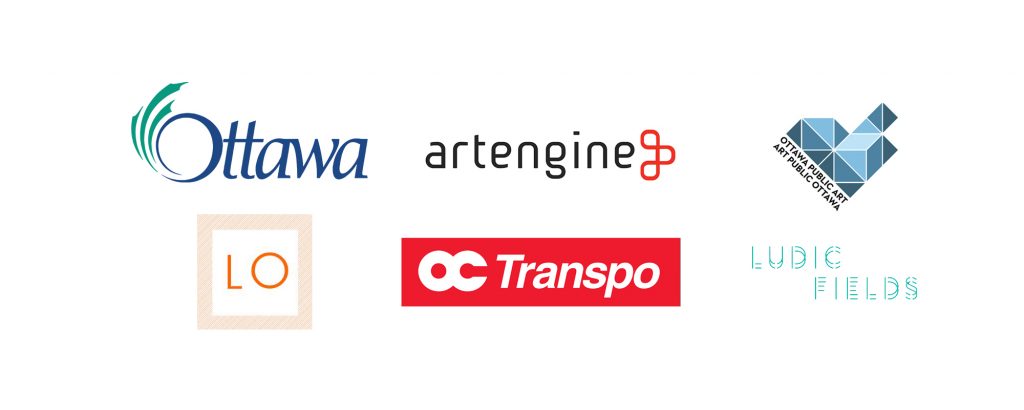Ludic Fields is a new interactive art work for public space created by Artengine, Andrew O’Malley and Lateral Office for Architecture
Ludic Fields is an interactive public art project created by Artengine in collaboration with Andrew O’Malley and Lateral office. This media art installation piece was on display from July to November 2017 in three key sites in Ottawa: Ogilvy Square, Baseline Transit Station and Blair Transit Station.
Ludic Fields featured nine sculptures equipped with sensors in which the viewer stands in front of the sculpture, the sculpture then detects and responds to movement. These sensors translate the movement into dynamic lighting effects which then travel across the city to the other sculptures locations. When one sculpture lights up due to the viewer’s interaction, the others respond.
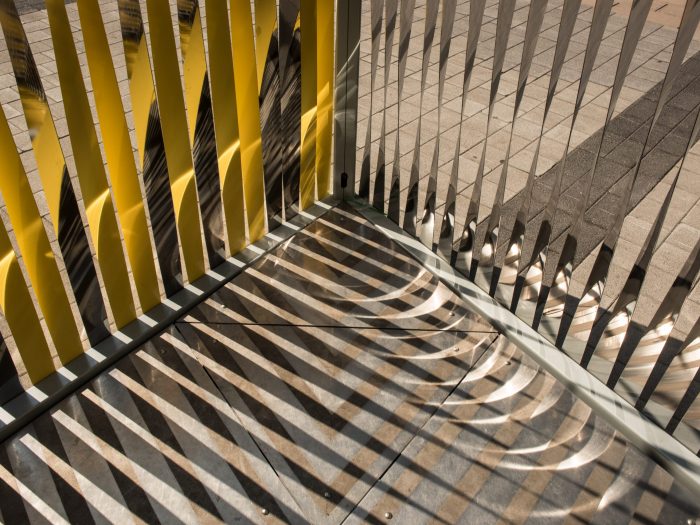
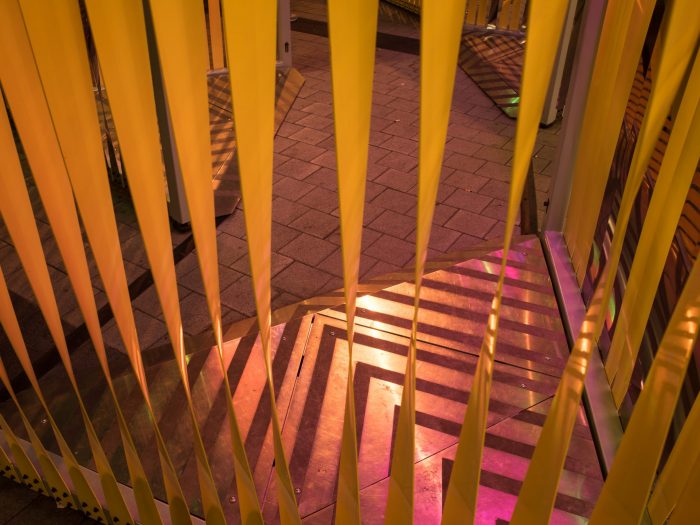
Ludic Fields is an interactive public art project created by Artengine in collaboration with Andrew O’Malley and Lateral office. This media art installation piece was on display from July to November 2017 in three key sites in Ottawa: Ogilvy Square, Baseline Transit Station and Blair Transit Station.
Ludic Fields featured nine sculptures equipped with sensors in which the viewer stands in front of the sculpture, the sculpture then detects and responds to movement. These sensors translate the movement into dynamic lighting effects which then travel across the city to the other sculptures locations. When one sculpture lights up due to the viewer’s interaction, the others respond.
Lighting:
By day, the sculptures provide playful reflections of the city’s bustle, and at night, they light up and respond to the rhythm of the night.
The lighting elements were designed to activate the sculptures at night and allow the connection between the different locations. A single line of RGB LEDs runs through the top of each unit, influenced by pressure sensors on the floor. When the units are empty, they shimmer with their colours influenced by the previous interaction. Movement within the sculptures sensors speeds up the shimmering and sends a coloured bar of light along all the connected works. The colour and the length of light emitted is adjusted depending on the interaction that occurs across all of the sites. The lighting elements were taken into careful consideration to ensure a responsive interactive and visually stunning display.
Transportation:
A key aspect of this project is its integration with Ottawa’s public transportation network. With the support of OC transpo, the Ludic Fields sculptures are strategically placed at major stations along the Ottawa bus lines. This not only allowed the artwork to be accessible to a broad audience but also reinforces the theme of interconnectedness. As commuters interact with the sculptures at different bus stops, their actions trigger lighting effects across the city, paralleling the way public transportation connects various parts of Ottawa. This integration highlights the relationship between mobility and community, using art to visualize and enhance the connections facilitated by the city’s transit system.
Community/Interactivity
Ludic Fields was designed with the intention of connecting the city through art and fostering a sense of community. By allowing viewers to control the lights and influence sculptures across different locations, the project encourages a shared experience among participants scattered throughout the city. This interactive element not only beautifies the public spaces but also bridges the physical distances between them, symbolically and visually connecting diverse parts of Ottawa. The synchronized lighting effects serve as a visual representation of the community’s collective interaction, making the city feel more unified and engaged through this artistic medium.
The intention of this project was to unite the city and bring the Ottawa community closer together through public artworks using new technologies to bridge the spatial gaps. Early designs reflected just that, a series of connected sculptures scattered throughout the city and brought back together again through interaction and transportation. This idea then shifted to create sculptures that had occupiable spaces for viewers to interact with.
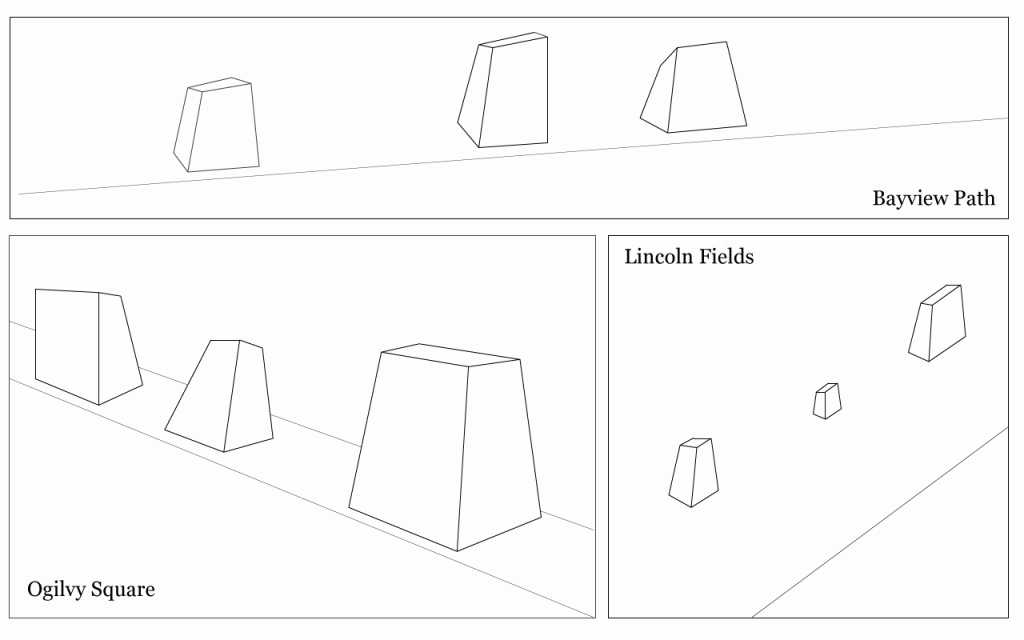
Light and colour were always at the heart of the project, being the visual cues that allowed viewers to see their interactions with the work and see the interactions from the sculptures across the city. With this in mind, creating a visually stunning colour piece was crucial to the work.
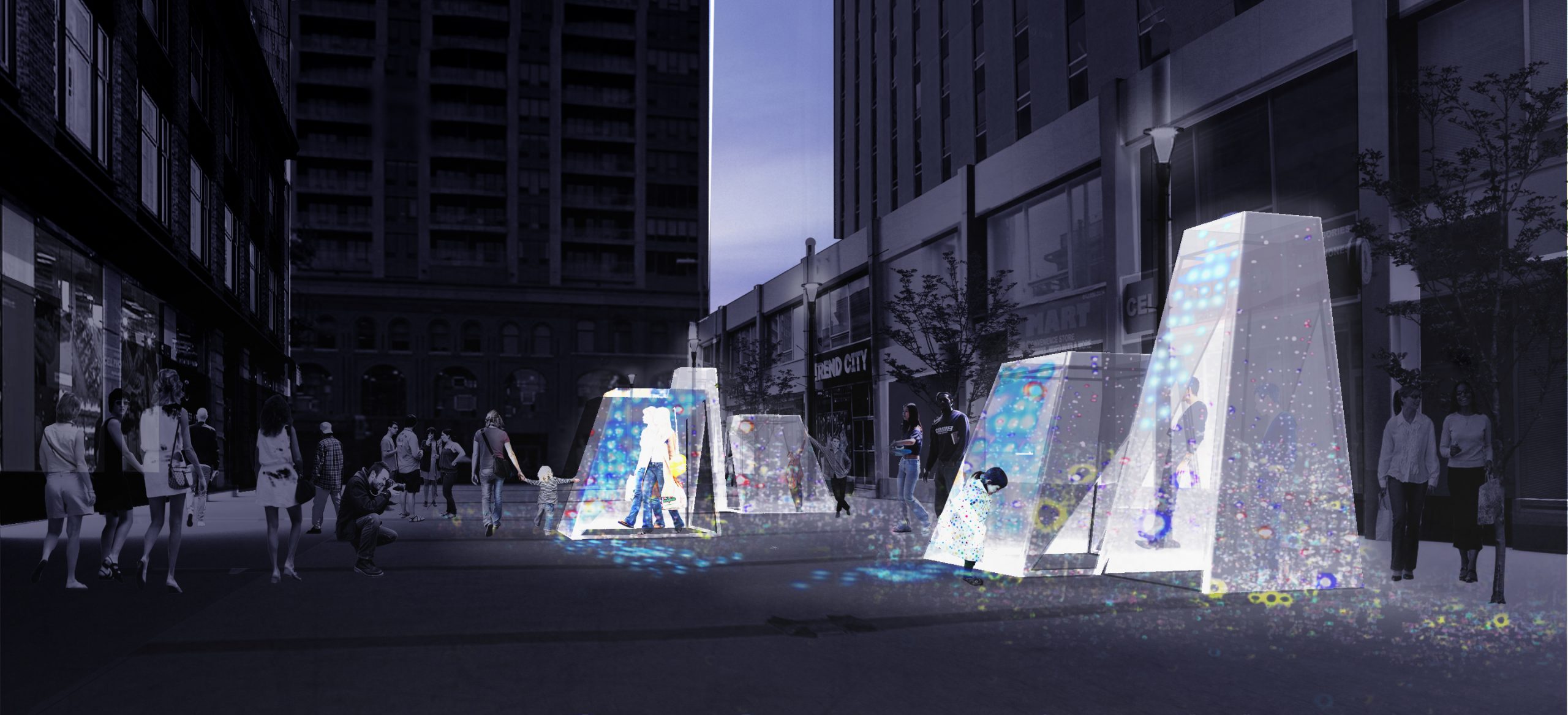
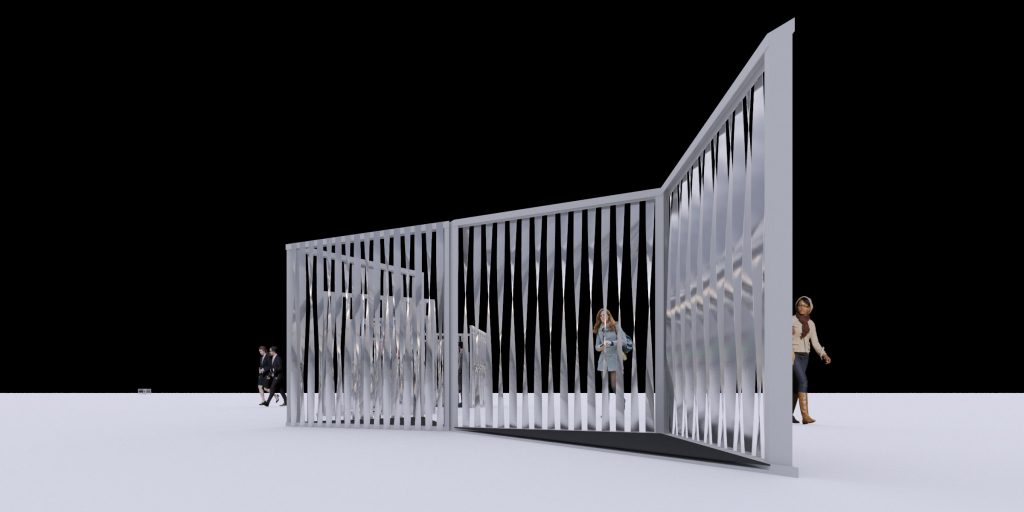
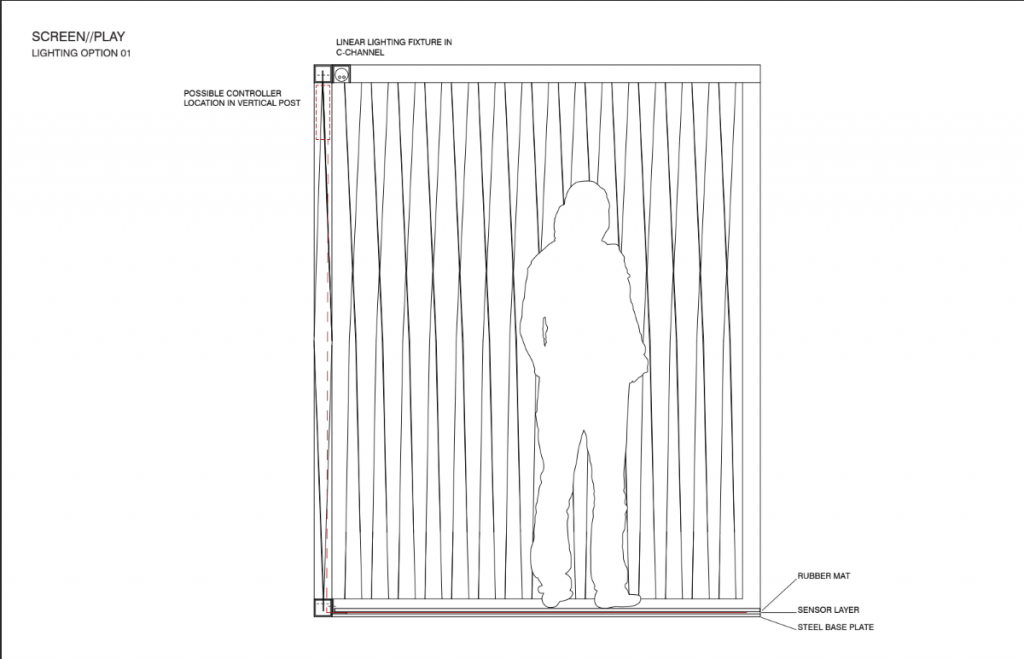

Through research and tests, came nine sculptures distributed across three sites in Ottawa: Ogilvy Square, Baseline Transit Station, and Blair Transit Station. Each sculpture is equipped with sensors that detect movement from the public. These sensors are integrated into the floor around the sculptures to capture the presence and actions of individuals nearby.
The sculptures incorporate a single line of RGB LED lights running along their top. These LEDs are capable of producing a wide range of colours, which are controlled based on the interactions detected by the sensors. The integration of sensors and LED technology was done with careful consideration to ensure reliability and responsiveness, making the sculptures both aesthetically pleasing and functionally interactive.The sculptures communicate with each other through a network that allows them to share interaction data. This means that an interaction at one sculpture can influence the lighting effects on other sculptures, creating a city-wide interactive experience. The more the public interacts with the sculptures, the more dynamic and interconnected the lighting effects become.
The sculptures are programmed to communicate movement data across all sites, meaning that an interaction at one location can cause a ripple effect, activating the lighting sequences at other locations. This interactivity is designed to symbolize the interconnectedness of the city’s inhabitants and the transit system.
The finished product of Ludic Fields is a sophisticated interactive public art installation that combines sensor technology, dynamic lighting, and networked communication creating an engaging and interconnected city experience. The sculptures are designed to react to human presence, offering both immediate and city-wide visual feedback, thereby fostering a sense of community and connectivity among the city’s residents and transit users.


